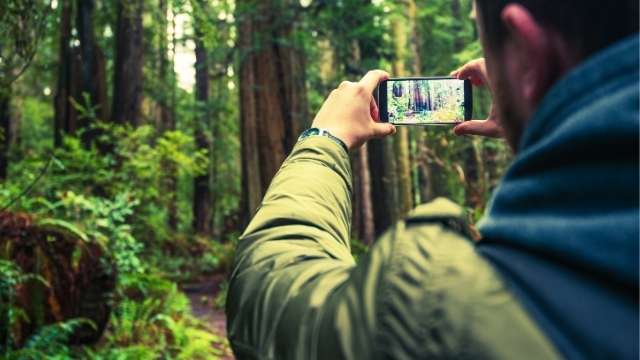If you don’t have a fancy camera, it doesn’t matter. You can start enjoying photography now with just what you carry around in your pocket—your smartphone. Smartphones these days can do just about everything.
All of the old myths—cellphone photos aren’t good enough for magazines, cellphone photos don’t have enough pixels for publication, etc.—were debunked long ago. Cameras in smartphones these days are more than good enough (unless you want to blow the picture up to the size of a wall).
I should know, I’m a travel writer and photos taken with my iPhone 7 have been published by magazines both digitally and in print time and again. I’ve even taken it to the next level by shooting videos, which have been published by multiple outlets and YouTube.
So, throw those myths and doubts out the window, and let me share five tips on how to take your smartphone photography to the next level:
Tip 1: Breathe
As it’s called in photography circles, “camera shake” is one of the biggest killers of a great shot. It leads to blurriness, out-of-focus subjects, and a slight hazy appearance which usually makes you hit delete as soon as you review the photo.
If you breathe deeply and evenly it steadies your hand while giving the camera time to focus properly. Then hold your breath a moment and take the shot. It produces a clear, in-focus, and saleable image.
Another option is to find something to lean on—a wall, tree, streetlight, fence, or parked car—anything you can use to steady your hand.
Tip 2: Know Your Smartphone
You wouldn’t go mountain climbing with a bungy cord or piece of string, would you? No. Well, photography is the same. Know what your smartphone can and can’t do. Don’t expect it to take sweeping landscape shots fully in focus like your expensive Nikon or Canon wide-angled lens.
Instead, play to its strengths. Get up close and personal. You can still take that beautiful landscape shot, but concentrate on something in the foreground so it’s in sharp focus. Like this beach hat:
The rest doesn’t need to be in sharp focus, and it creates a softer background by changing the depth of field.
Tip 3: Use Add-Ons
If you want to take wide-angle shots, you can. If you want to get in close for macro work, you can. There are cellphone lens kits available today that produce shots that would surprise professionals to learn they came from a smartphone.
Attachable lenses that give you 45 percent wider pictures…excellent macro lenses that give 15x magnification…even clip-on LED lights that provide more natural, uniform lighting instead of the harsh and unnatural bright light of a flash—you can get all of these in a kit for under $45.
Tip 4: Keep Focus
Yes, I know, you may be shaking your head and thinking this is the most basic thing about photography. But I mention it because smartphones focus differently.
Do this with me:
Pull out your smartphone and focus on something, anything. Take a moment to really look at your subject through the smartphone camera. Now, on the screen tap the top of your subject, then tap the bottom. See how the light changes? By taking a moment to touch the screen, you can take the picture with optimal light. As you’ve heard countless professional photographers say—lighting is everything!
Tip 5: Try Video
As I mentioned earlier, your smartphone is capable of not only saleable photography, but also great video.
If this interest you, get a gimbal to steady your frame as you walk around, enjoy boat rides, or climb onboard camels. Gimbals reduce, if not remove, that dreaded shake and jostling movement as your body moves.
There are hundreds of tutorials on YouTube on how to use them. Easy to use, they help your smartphone create yet another income stream.
My smartphone is always with me. Ruby, my Canon, is not. Sometimes my iPhone is all I have, but it works beautifully. It’s a big part of how I make a living. Half of the shots I sell are from my iPhone—so don’t doubt that yours can do the same.


